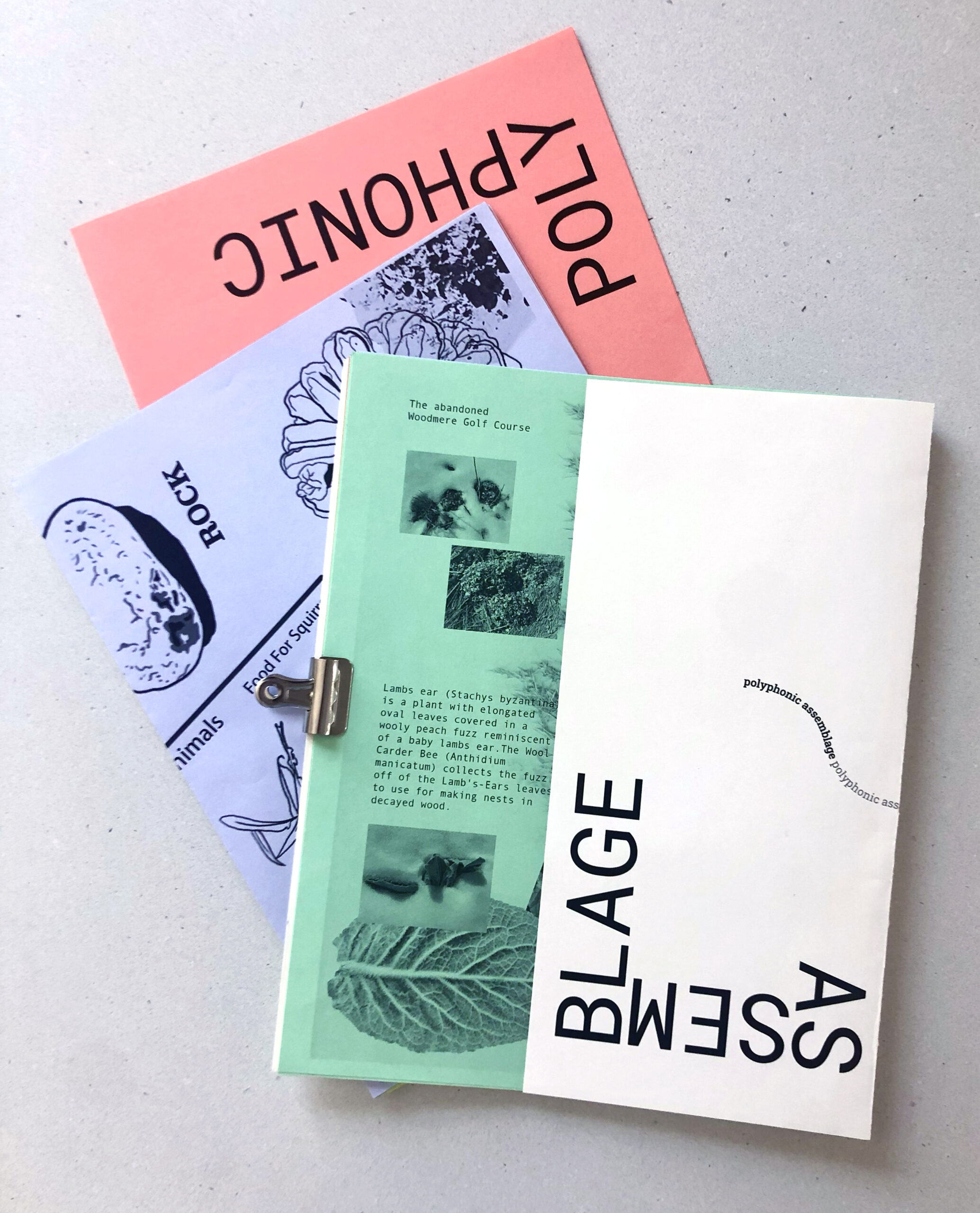Symbiotic Futures: Cross-Disciplinary Studio

Jean Brennan and Maria Gracia Echeverria
School of Design, Graduate Communications Design
We seek to move beyond the subject of ‘sustainability’ as a purely material discussion and invite students to build empathy and interconnectedness with the living and breathing world.
This cross-disciplinary studio for Spring 2022 explores ecological thinking and invites deep conversations amongst our first-year cohort (74 students + 7 faculty). With prompts such as: color through the eyes of trout fish, collectivity amongst honey bees, communication between trees, resiliency in sagebrush plants, memory in slime mold (and the list goes on), we are expanding our understanding of concepts beyond human constructs.
But the course isn’t just about knowledge building. As cultural producers, designers tell stories. We investigate non-human perspectives to reimagine how, about what, and for whom we tell such stories. Methods we are exploring include: listening, embodiment, becoming with, relational aesthetics, rituals, dialogues, reciprocity and entanglement—and the students will be adding to that list as the course progresses. The theme is ’Symbiotic Futures’ and the course leans heavily on design fiction and speculative design so we will be taking some creative license with our discoveries.
Watching non-scientists who are visual thinkers gather and compose a montage of field studies, trace a species lineage, or create a dialogue with an organism, gets at that cross-disciplinary interface—how do designers go about mapping relationships differently? How might one field inform the other about placemaking? What are the overlaps between evolution and ontology?
Special thanks to the involvement of the Math and Science Department—Enrique Lanz Oca gave a remote lecture on geography and placemaking, while Chris Jensen spoke about symbiosis and evolution. Later in the semester, actor, Elisa Alemparte from Pace University, will visit to discuss somatics.
In some ways this is a rethink on the practice of human-centered design—to decenter humans, yes, but also to employ the same ethics and methods of care to the wider world. We are curious how design can operate outside capitalism and remain relevant by adeptly responding to the urgent and beautiful world around us.